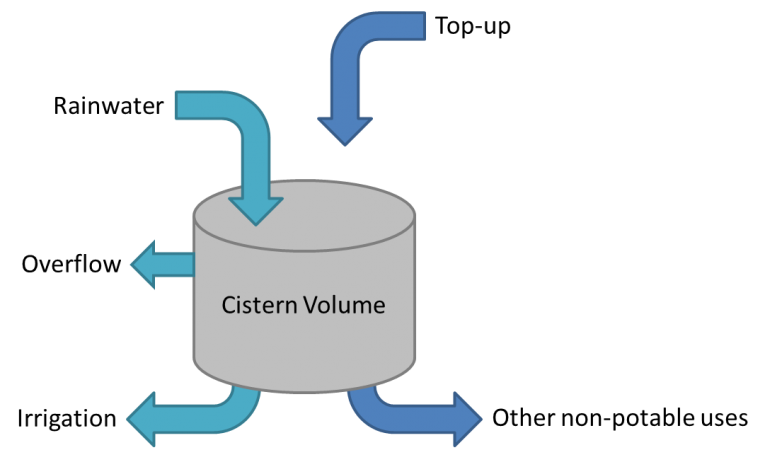Difference between revisions of "Rainwater harvesting: Sizing and modeling"
Jenny Hill (talk | contribs) |
Jenny Hill (talk | contribs) |
||
| Line 28: | Line 28: | ||
<div class="col-md-8"> | <div class="col-md-8"> | ||
<p>The Sustainable Technologies Evaluation Program have produced a rainwater harvesting design and costing tool specific to Ontario. The tool is in a simple to use Excel format and is free to download.</p> | <p>The Sustainable Technologies Evaluation Program have produced a rainwater harvesting design and costing tool specific to Ontario. The tool is in a simple to use Excel format and is free to download.</p> | ||
| − | <p>In a study of three sites in Ontario, STEP found the annual C<sub>vol</sub> of the rooftops to be around 0.8[http://www.sustainabletechnologies.ca/wp/home/urban-runoff-green-infrastructure/low-impact-development/rainwater-harvesting/performance-evaluation-of-rainwater-harvesting-systems-toronto-ontario/] | + | <p>In a study of three sites in Ontario, STEP found the annual C<sub>vol</sub> of the rooftops to be around 0.8 [http://www.sustainabletechnologies.ca/wp/home/urban-runoff-green-infrastructure/low-impact-development/rainwater-harvesting/performance-evaluation-of-rainwater-harvesting-systems-toronto-ontario/]. This figure includes losses to evaporation, snow being blown off the roof, and number of overflow events.</p> |
</div> | </div> | ||
<div class="col-md-2"> | <div class="col-md-2"> | ||
Revision as of 17:51, 7 June 2017
Rapid[edit]
Total cistern volume can be estimated by multiplying the depth of design storm the catchment area.
One millimeter of rain landing on 1 m2 results in 1 L of runoff.
For example, the 90th percentile event in Barrie is 26 mm, so every 1 m2 of rooftop will generate 26 L during this storm event.
A 2000 m2 building would generate approximately 54,000 L.
The designers have three choices:-
- Construct a suitably sized concrete vault underground to capture all 54,000 L of the water
- Alter the slope of the roof to create two or more catchments, the smaller catchments may be diverted to plastic or fiberglass cisterns
- Design 1. or 2. Slightly undersized for this storm, but with additional capacity in an infiltration system to capture overflow. Examples include bioretention cells or infiltration chambers.
<panelInfo>
</panelInfo>
STEP Rainwater Harvesting Tool[edit]
The Sustainable Technologies Evaluation Program have produced a rainwater harvesting design and costing tool specific to Ontario. The tool is in a simple to use Excel format and is free to download.
In a study of three sites in Ontario, STEP found the annual Cvol of the rooftops to be around 0.8 [1]. This figure includes losses to evaporation, snow being blown off the roof, and number of overflow events.
The Treatment Train Tool[edit]
Once the size of cistern has been determined, it can easily be modelled in many open source and proprietary applications.
In addition to the cistern size, this watershed scale modelling requires input information about draw down. time i.e. the rate of use.
<btnPrimary>The Treatment Train Tool</btnPrimary>
See Also[edit]
This list will be other 'Sizing and Modelling' pages
External Links[edit]
| SEND US YOUR QUESTIONS & FEEDBACK ABOUT THIS PAGE |
